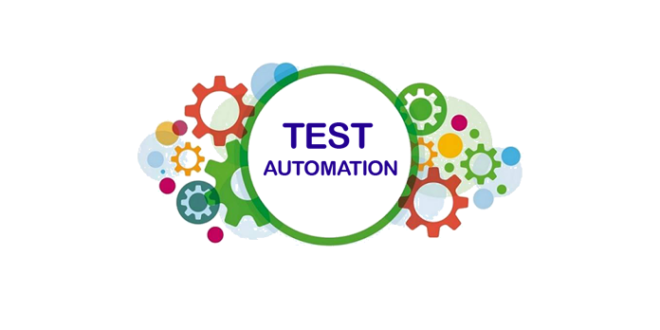Automation Testing Structures: Simplifying Complex Testing Circumstances
Automation Testing Structures: Simplifying Complex Testing Circumstances
Blog Article
From Manual to Automated Screening: A Comprehensive Guide to Transitioning Smoothly and Effectively
In the realm of software program testing, the shift from handbook to automated procedures has ended up being an increasingly vital shift for organizations looking for to improve performance and accuracy in their screening methods. As innovation remains to advancement, the demand for effective and smooth computerized screening approaches has never been more important. The trip from guidebook to automated testing is not without its difficulties, yet when come close to strategically and with a clear strategy in mind, the benefits can be substantial - automation testing. In this extensive guide, we will certainly discover crucial actions and considerations essential for an effective shift, from the initial selection of tools to the integration of automation into existing process. Keep tuned to reveal the understandings that will aid lead the way for a smoother and a lot more effective testing procedure.
Advantages of Automated Checking
Automated screening supplies various advantages, improving performance and precision in software application advancement procedures. One main advantage is the significant reduction in testing time. Automated examinations can be run all at once on multiple gadgets and operating systems, substantially speeding up the screening stage compared to hands-on testing. This enhanced performance enables faster responses on the high quality of the software, allowing developers to identify and resolve problems without delay.
Moreover, automated testing guarantees a greater level of precision in detecting issues. Considering that automated examinations adhere to predefined manuscripts, human mistake is minimized, bring about more trustworthy test results. Consistency in screening is also enhanced, as automated tests perform the very same actions precisely each time they are run. This uniformity is vital in guaranteeing that all performances of the software are thoroughly checked, decreasing the probability of unseen pests sliding with to manufacturing.
Selecting the Right Devices

First of all, analyze your demands and objectives. Comprehend the extent of your job, the innovations included, and the capability of your team. This analysis will assist you establish the attributes and capacities you need in your screening devices.
Secondly, think about the compatibility of the tools with your existing systems and procedures. Smooth integration with your present software growth lifecycle is necessary to guarantee a smooth transition to automation.
Furthermore, review the scalability and versatility of the tools. As your screening requires advance, the devices ought to have the ability to adjust and accommodate changes successfully.
Lastly, element in the support and community around the tools. When implementing automated testing, durable assistance and an active individual community can give valuable sources and aid. By carefully thinking about these aspects, you can pick the right devices that line up with your requirements and established the phase for a successful transition to automated screening.
Composing Reliable Examination Scripts

When crafting test scripts, it is necessary to take into consideration the specific demands of the software application being tested and make sure that the manuscripts address all vital functionalities. Clear and detailed calling conventions for examination manuscripts and examination cases can improve readability and maintainability. In addition, including error handling devices within the test scripts can assist in identifying and addressing issues quickly.
Additionally, organizing test manuscripts right into modular parts can enhance reusability and scalability, reducing redundancy and enhancing effectiveness in test script upkeep. Normal testimonials and updates to check scripts are important to maintain pace with evolving software program requirements and capabilities. By following these concepts, testers can produce effective and robust test manuscripts that contribute considerably to the success of automated testing processes.
Integrating Automation Into Workflows
Reliable integration of automation devices into existing workflows simplifies procedures and boosts productivity within software program development cycles. When integrating automation into process, it is essential to determine repeated tasks that can be automated to conserve time and decrease human mistake. By perfectly integrating automated testing tools like Selenium or Appium into the software application growth lifecycle, groups can achieve faster responses on code adjustments, bring about quicker bug detection and resolution. This combination allows for constant testing throughout the growth process, making sure that any type of problems are recognized at an early stage, causing higher software application top quality. Furthermore, automation can be utilized to trigger tests instantly after each code commit, offering instant validation and liberating testers to focus on even more facility situations. Appropriate integration of automation tools calls for partnership in between growth, testing, and procedures groups published here to develop a unified operations that enhances effectiveness and effectiveness in delivering top notch software.
Guaranteeing a Smooth Change
Effectively transitioning to automated testing entails meticulous preparation and mindful implementation to decrease interruptions and make best use of performance in the software development procedure - automation testing. To make certain a smooth transition, it is vital to start by conducting a thorough evaluation of the existing screening processes and identifying areas where automation can bring one of the most substantial advantages. Engaging with all stakeholders early on at the same time, consisting of designers, testers, and task managers, is important for garnering assistance and buy-in for the automation campaign
Communication is crucial throughout this shift stage. Clear communication of the goals, benefits, and assumptions of automated screening helps to take care of any type of resistance or concerns that may occur. Furthermore, supplying adequate training and resources for staff member to upskill in automation tools and methods is essential for ensuring a successful shift.
Verdict
To conclude, transitioning from manual to automated testing provides many benefits, including increased performance and reliability. By selecting the suitable tools, writing reliable test manuscripts, and incorporating automation effortlessly into operations, organizations can guarantee a smooth and effective transition. It is vital to embrace automation as a valuable asset in software testing processes to improve general quality and productivity.
In the world of software program testing, the shift from handbook to automated procedures has become an increasingly vital transition for organizations seeking to improve performance and accuracy in their testing techniques. Automated tests can be run simultaneously on several gadgets and operating systems, significantly speeding up the testing phase contrasted to see page manual screening. Uniformity in testing is also improved, as automated examinations execute the exact same steps precisely each time they are run.To make sure the successful application of chosen testing devices, the production of efficient test scripts plays an important role in validating the capability and performance of automated processes - automation testing. By complying with these principles, testers can produce reliable and robust test manuscripts that contribute significantly to the success of automated screening processes
Report this page